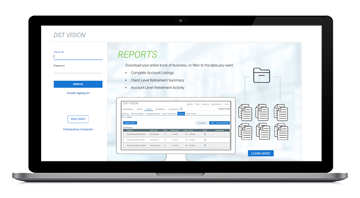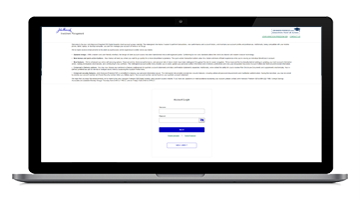Equity long/short as a core allocation
Weaker prospective returns, rising volatility, and persistently high correlations across asset classes are three market forces likely to shape investment management in the years ahead.

Given today's high stock valuations and low bond yields, conventional portfolio construction practices may not generate the same generous results that the average investor has realized in recent decades. Longer life expectancies and the diminishing presence of defined benefit pension plans introduce additional complications, as retirees face the growing risk of outlasting their assets. Fortunately, financial professionals and investors now have a greater range of tools to draw on when confronting these challenges—equity long/short mutual funds offer a case in point.
Equity long/short is migrating from an alternative to a mainstream investment
For those investors employing a risk-budgeting framework, lowering the price volatility of the portfolio's equity exposure allows for a higher overall allocation to the equity asset class. Endowments and other institutions have embraced this notion by allocating to hedge funds for years, and the idea has become increasingly important to individual investors and their financial professionals since the 2008 global financial crisis as more equity long/short strategies have migrated from the hedge fund world to the mutual fund universe. Equity long/short mutual fund assets grew more than tenfold from 2008 to 2015, as net inflows to the category totaled $30 billion; by contrast, active long-only U.S. equity mutual funds saw nearly $660 billion in net outflows during that period.1

Reducing the probability of extreme portfolio losses is especially critical for newly retired investors balancing spending goals with longevity goals since the sequence of realized returns becomes a more crucial consideration as their portfolios transition from the accumulation to the distribution phase; all else being equal, loss recovery times are much longer for portfolios with net outflows than those with net inflows. Yet a wholesale shift to fixed income may not be the best way to decrease risk in a low interest-rate environment. For these reasons, equity long/short strategies are likely to become a more integral part of the average investor's mainstream equity allocation and less of an esoteric outlier in the future.
Equity long/short tends to lag in up markets and lead in choppy and down markets
In an attempt to glean more insight about the implications of holding equity long/short strategies over different market regimes, we analyzed rolling one-year returns from 2000 to 2015. We found that, as rolling broad market returns decreased, so did the historical performance advantage of unhedged equities over long/short strategies. Further, we noted that in choppy or flat market periods, equity long/short managers don't necessarily need a sustained market rise in order to post positive total returns if they can capture a favorable spread between the relative performance of their long positions and their short positions. Over time horizons spanning at least a full market cycle, long/short strategies have fared well, both in absolute terms and relative to unhedged equities: For the 2000 to 2015 period, as a whole, the HFRI Equity Hedge Index generated annualized returns of 4.8%, with a standard deviation of 8.5%, while the S&P 500 Index generated lower annualized returns of 4.1%, with a higher standard deviation of 15.1%.2
How to categorize equity long/short: equity or alternative?
An allocation to equity long/short can be characterized as an equity and as an alternative asset class. Since equity long/short managers invest in equity securities and have the added flexibility to take short positions in assets they believe will underperform, the result is often a portfolio that's highly correlated with stocks, but one that experiences relatively muted price volatility across the investment cycle. The short positions tend to constrain a portfolio's upside potential in steadily rising markets, but the shorts also offer the potential of better downside protection during falling markets. Moreover, markets can experience prolonged states of choppy price movements where the broader trend is essentially sideways; during these violently flat periods, equity long/short managers may have a distinct advantage over their long-only counterparts. The ability of long/short managers to dampen price volatility through shorting has led many institutional investors to treat long/short strategies as a complementary, defensive form of equity exposure to be integrated with unhedged equities as part of the portfolio's overall structural stock allocation. Now, thanks to the rise of equity long/short strategies within the mutual fund marketplace, individual investors have a greater opportunity to do the same.
1 Strategic Insight, 2016. 2 Morningstar, Hedge Fund Research, 2016.
Important disclosures
Important disclosures
Van Etten Consulting, Inc. receives compensation from John Hancock Investment Management for consulting services provided, including the publication of this article.
The S&P 500 Index tracks the performance of 500 of the largest publicly traded companies in the United States. The HFRI Equity Hedge Index is designed to be representative of investment managers who maintain positions both long and short in primarily equity and equity-derivative securities. These equity hedge managers typically maintain at least 50% net long exposure to equities. It is not possible to invest directly in an index. Past performance does not guarantee future results.
The fund's strategies entail a high degree of risk. Leveraging, short positions, a non-diversified portfolio focused in a few sectors, and the use of hedging and derivatives greatly amplify the risk of potential loss and can increase costs. A non-diversified portfolio holds a limited number of securities, making it vulnerable to events affecting a single issuer. The stock prices of midsize and small companies can change more frequently and dramatically than those of large companies. Foreign investing, especially in emerging markets, has additional risks, such as currency and market volatility and political and social instability. Fixed-income investments are subject to interest-rate and credit risk; their value will normally decline as interest rates rise or if an issuer is unable or unwilling to make principal or interest payments. Investments in higher-yielding, lower-rated securities include a higher risk of default. Exchange-traded funds reflect the risks inherent in their underlying securities, including liquidity risk. The use of hedging and derivatives could produce disproportionate gains or losses and may increase costs. Liquidity—the extent to which a security may be sold or a derivative position closed without negatively affecting its market value, if at all—may be impaired by reduced trading volume, heightened volatility, rising interest rates, and other market conditions.
MF313873






